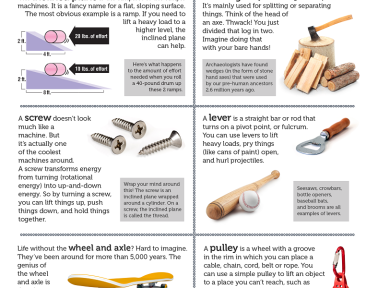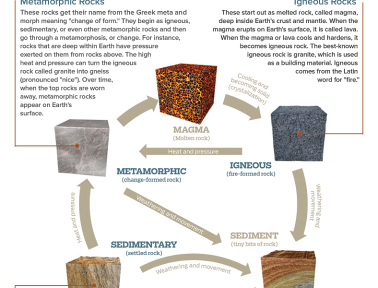It’s January, and in many families that means time to register for preschool. I’ve had several readers email me describing the overwhelming task of selecting a quality preschool, and asking for my suggestions. So I’ve assembled a list here of what I would look for in a quality play-based preschool. This is my dream list, and you have to realize that there are some great programs that won’t have every component I list here. You have to be aware of what your priorities are and what you’re willing to live without or make up for at home.
Structure/Schedule
Free Play. I would want to see about one hour of a part day program devoted to free play. This doesn’t mean everyone in the classroom is running around screaming. This means the children get to choose from a variety of planned and prepared activity areas (discussed below) that they can engage in with little direction from teachers. (Notice I said “little direction” not “little interaction. More on that later too.) This format provides for more valuable social interactions, allows children to be inquisitive and follow their interests at their individual paces, while also teaching children to plan and organize their time.
Large Group. A smaller portion of the day would be spent in a large group setting where all of the children meet together for group games, music and movement, fingerplays, stories, group discussions, or active and appropriate mini-lessons.
Small Groups. Time would also ideally allow for children to be divided into smaller groups for book activities, cooking opportunities, or other projects that require more individualized attention.
Snack. I like to see a snack in the structure, not just because I like food, but because there is a lot that can be taught about social skills in that setting. A little food along the way also helps to keep little bodies on an even keel.
Environment
The preschool room would be inviting, print-rich, and child-centered. Get down on your child’s level and see it through her eyes. Can you see the decorations? Can you reach the supplies? The room should be arranged in a way that invites your child to participate, and teachers should be able to identify the developmental objectives of each activity.
These are the activity areas I would look for in an ideal room:
Dramatic Play. This is the dress-up area. Ideally the props and themes would change from time to time. Language and social skills are strengthened here, along with problem-solving and symbolic thinking (critical for reading and other academic endeavors).
Art. Along with an easel, it’s ideal to see a table in an area that encourages creative art. Supplies may be organized as to be available every day, but ideally the media would change from time to time. I would hope to see more arts than crafts here.
Sensory. Whether it’s a homemade sensory bin or a high-end water table, I’d like to see an area where children can explore a variety of sensory media.
Blocks/Construction/Large Motor. A large open area should be available for block play where children might build with unit blocks as well as a variety of other construction sets like marble tracks, pipes, or tracks. This large open area would also be used for large motor movement activities like obstacle courses or music and movement activities. (Of course it could be so ideal that they have both in two separate spaces! :0)
Small Manip. One area would ideally be devoted for manipulatives that promote fine motor development. This is the place for puzzles, lacing beads, peg boards, and small blocks like Legos.
Writing Area. To encourage literacy, there would be an area of the room with writing supplies (notebooks, clipboards, pencils, crayons, envelopes, etc.) available to the children at any time. Additional writing supplies would be integrated into other areas as props, lists, or sign-up sheets.
Book Shelf. There should be a book shelf in the room that visually calls the children to come and read. The area would ideally include soft areas for the children to plop down with a book. In my ideal scenario, children would be read to in a variety of settings throughout the day: whole group, small group, one-on-one in free choice time, or simply browsing independently.
Outside. In my perfect world, every preschool program has a devoted outside area for the children (which is offered as part of free choice and also integrated into other planned activities.) This area would be safe, but also with natural rough edges. Fancy slides and play equipment are nice, but I’d trade it for a big sandbox, gardens, trees, and bushes.
Teachers
I would hope to observe teacher interactions in the classroom. Teachers would be interacting with children (not just other teachers) during free choice time, questioning, rephrasing, and challenging the children, not just directing or reprimanding them. I would watch for signs of rapport with the children: getting down on their level to make eye-contact, appropriate touch, enthusiasm, positive guidance, and a passion for what they do, as well as a positive response from the children. In a perfect world, a preschool class would maintain a teacher to child ratio of one teacher per four or five children. I would want to know that the teachers were well-trained and that the staff had a low turnover rate.
Questions
If I had the chance to ask questions during an orientation or a visit with the director, in addition to any questions about what I’ve already written above, I’d ask:
What type of communication can I expect? (I’d hope not only for an open-door policy and open communication, but also for newsletters that tell about what’s going on and what’s being learned, not just when I need to pay and when the next parent event is.)
What is your philosophy about play and academics? (I think I’ve made my own opinion clear here.)
How do you deal with behavior issues? (I’d be hoping for some positive guidance techniques of course.)
What can I do to help in this program? (I want a program that sees me as a partner, not just a bus driver with a tuition check.)
You’ll want to spend some time thinking about other questions that pertain specifically to your own child’s needs. It’s also a good idea to connect with other parents who have or have had children in the program. (You can ask the director for references.) Parents will give you a different perspective than directors and teachers.
What I’ve described here is my ideal. Keep in mind that you may not find everything in one program. Decide which things are deal breakers and which ones you can compensate for. Each child is different, and responds differently to different details. In the end, you have to go with your gut.
What would you add to my lengthy list? What do you look for?
Photos by Anissa Thompson.
<!–
–>










